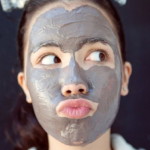
By: Marci Robin
As common as psoriasis may be, the autoimmune condition, which typically presents as rash-like scales on the skin, poses a unique challenge for those who wear makeup. Many people with the flaky, often red patches psoriasis causes want to conceal the condition’s most visible symptom, but those plaques are also especially difficult to conceal. Where daily makeup application may be an afterthought for those who don’t have psoriasis, those who do may not know how to apply foundation and concealer without emphasizing the roughness of their patches or further upsetting their skin.
“Applying makeup to psoriasis is challenging because plaque psoriasis has scales that can be uncomfortable and easily irritated,” says makeup artist Dana Rae Ashburn. “You don’t want to make the area look worse by piling on product. And you also don’t want to make the affected area appear even more dry.”
We spoke to Ashburn and other experts to determine the safest and most effective approach to applying makeup when you have psoriasis so you can feel confident, even during flare-ups.
How should psoriatic skin be prepped for makeup?
Complexion makeup can get caked up if applied over dry, scaly, thick psoriatic skin, according to New Jersey dermatologist Shari Sperling, which is why she emphasizes the importance of preparing skin for makeup. “You should moisturize and use products that help to soften the skin prior to applying makeup,” she tells Allure.
Makeup artist Meredith Baraf couldn’t agree more, urging head-to-toe moisturizer application. “Make sure to give extra love to any areas of psoriasis. You are moisturizing to soothe, soften, and hydrate your skin,” she tells Allure. “By doing this you are also prepping your skin for seamless coverage of any areas of psoriasis.”
What kind of makeup ingredients should you avoid?
As important as moisturizing ingredients are to the look and feel of skin with psoriasis, it’s also important to avoid other types of ingredients — and some are quite common.
“People with psoriasis should avoid ingredients like fragrances and dyes, as they are known to irritate your skin,” Sperling tells Allure. “Also, alcohol in products can dry your skin out.”
How should I apply foundation to psoriatic skin?
As tempting as it may feel to pile on heavy, full-coverage foundation, both Ashburn — who often refrains from covering her own psoriasis with makeup — and Baraf say it’s best to keep it simple. “In my opinion, the fewer the products and steps, the better,” she says. “You don’t want to irritate or aggravate the area in the process of covering.”
The two makeup artists also agree that when it comes to foundation buildable is best. “Look for a foundation that has sheer to buildable coverage — not mattifying, but has a good amount of pigment,” Ashburn suggests.
No matter what foundation you choose, the way you apply it really matters. “Remember that the tools you use to apply your foundation play a huge role in the payoff of the product you are applying,” Baraf tells Allure, explaining that her approach to covering psoriasis on the face is to apply foundation as she would to non-psoriatic skin.
“Next, go back in with the same foundation and a tool that will have a more dense payoff to the area where it is applied. This could be your finger or a small foundation brush,” she says. “You want to lay the product down in those areas and then buff any edges.”
Another option, according to Ashburn, is to use a makeup sponge. “With a clean, damp makeup sponge press the product onto the prepared area,” she says. “Apply thin layers until you reach your desired coverage.”
What about concealer and powder?
Whether or not you choose to build upon your foundation’s coverage with concealer is entirely up to you. Baraf prefers to forego it.
“Using a concealer shouldn’t be necessary unless you are using a foundation that isn’t buildable,” she tells Allure. “It’s easier to manage the finish if you aren’t mixing different product textures.”
If you do want to use concealer, Ashburn recommends spot-concealing using a product that isn’t mattifying, like Beautycounter Touchup Skin Concealer Pen. “Apply it and let it sit for one minute. This will help the formula become thick and give better coverage. Then blend,” she advises.
Once you’re happy with your coverage, consider setting it the way makeup artist Mario Dedivanovic recommended to his Masterclass students who may deal with psoriasis: with Laura Mercier Translucent Loose Setting Powder.
How about body coverage?
Psoriasis plaques occur more often on the body than on the face, so while you may not usually wear body makeup, you may want to try to cover the scaliness when you’re experiencing a flare-up.
“My favorite products to cover and camouflage [body] psoriasis are full-coverage, moisture-infused body makeups,” says Baraf. She uses a body brush to apply long strokes of product, but she says hands or a mitt work well too.
Baraf loves the KKW Beauty Skin Perfecting Body Foundation and Westmore Beauty Body Coverage Perfector. “These both cover and help to blur imperfections without the worry of transfer,” she says.
How should makeup be removed from psoriatic skin?
Because psoriasis is so easily exacerbated, the way you remove your makeup is just as important as the way you apply it. Sperling recommends using a gentle cleanser and incorporating alpha- and beta-hydroxy acids into your cleansing routine. “Glycolic acid and salicylic acid products can gently help remove the scaly, dry areas and help smooth out skin,” she says.







